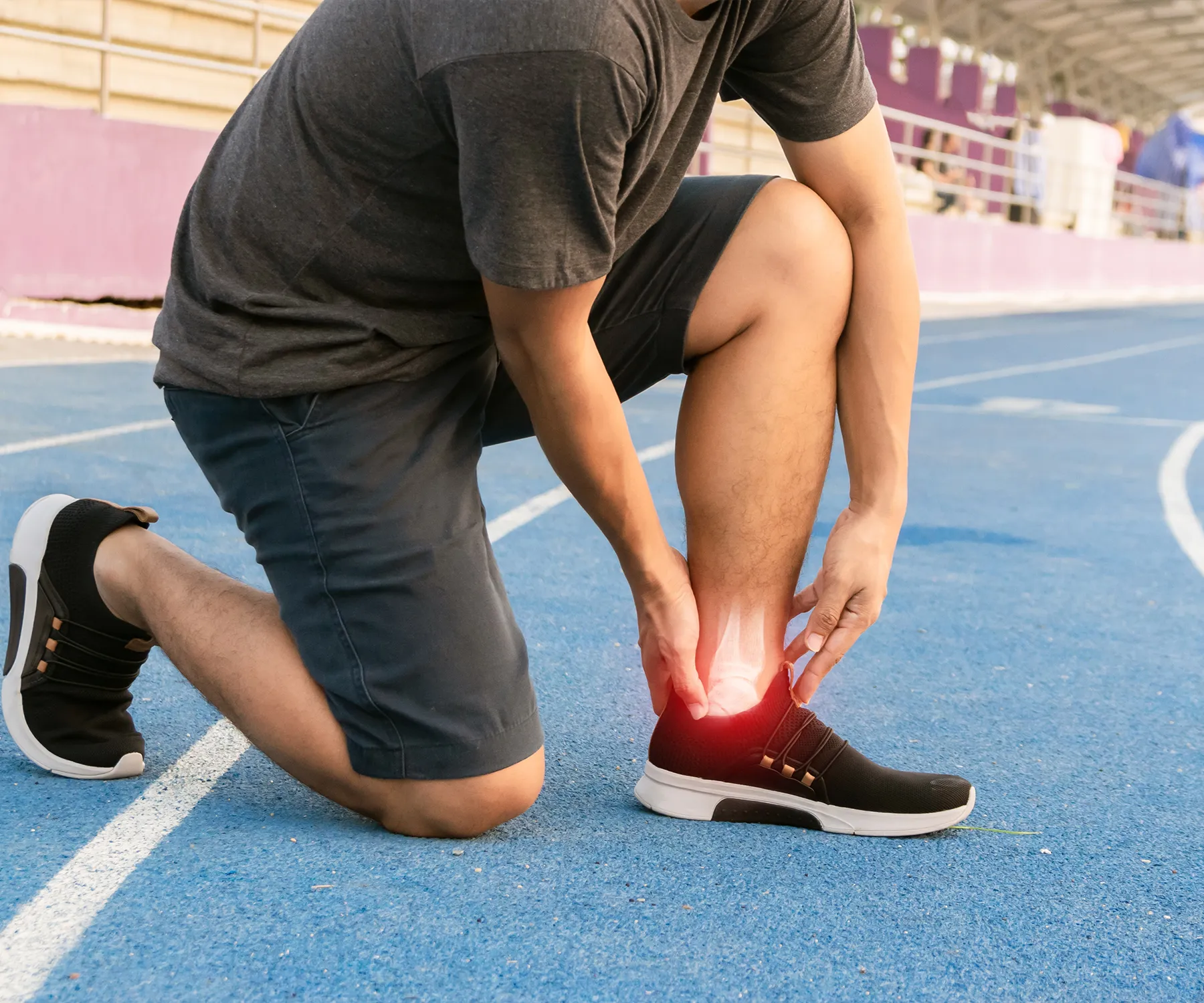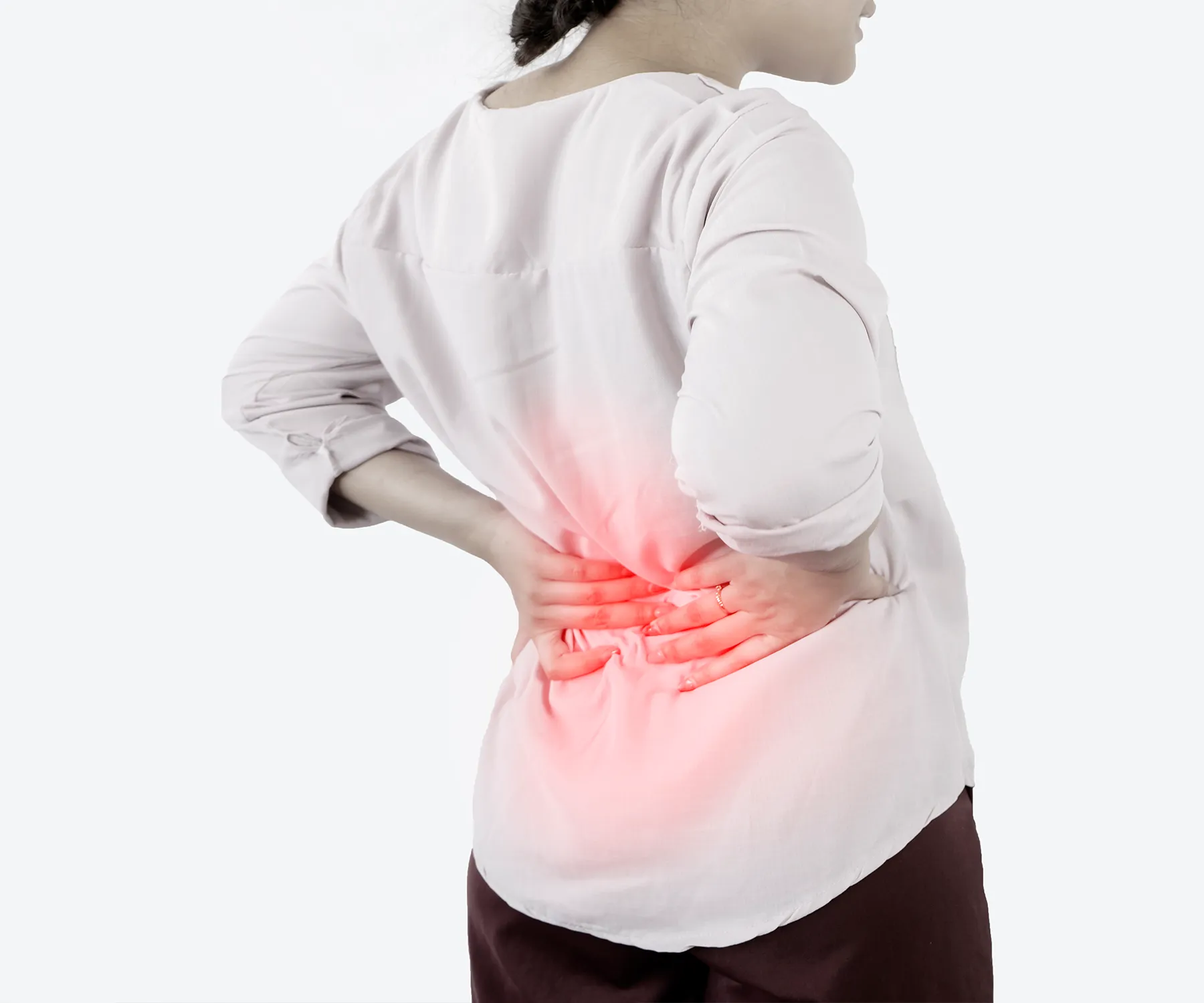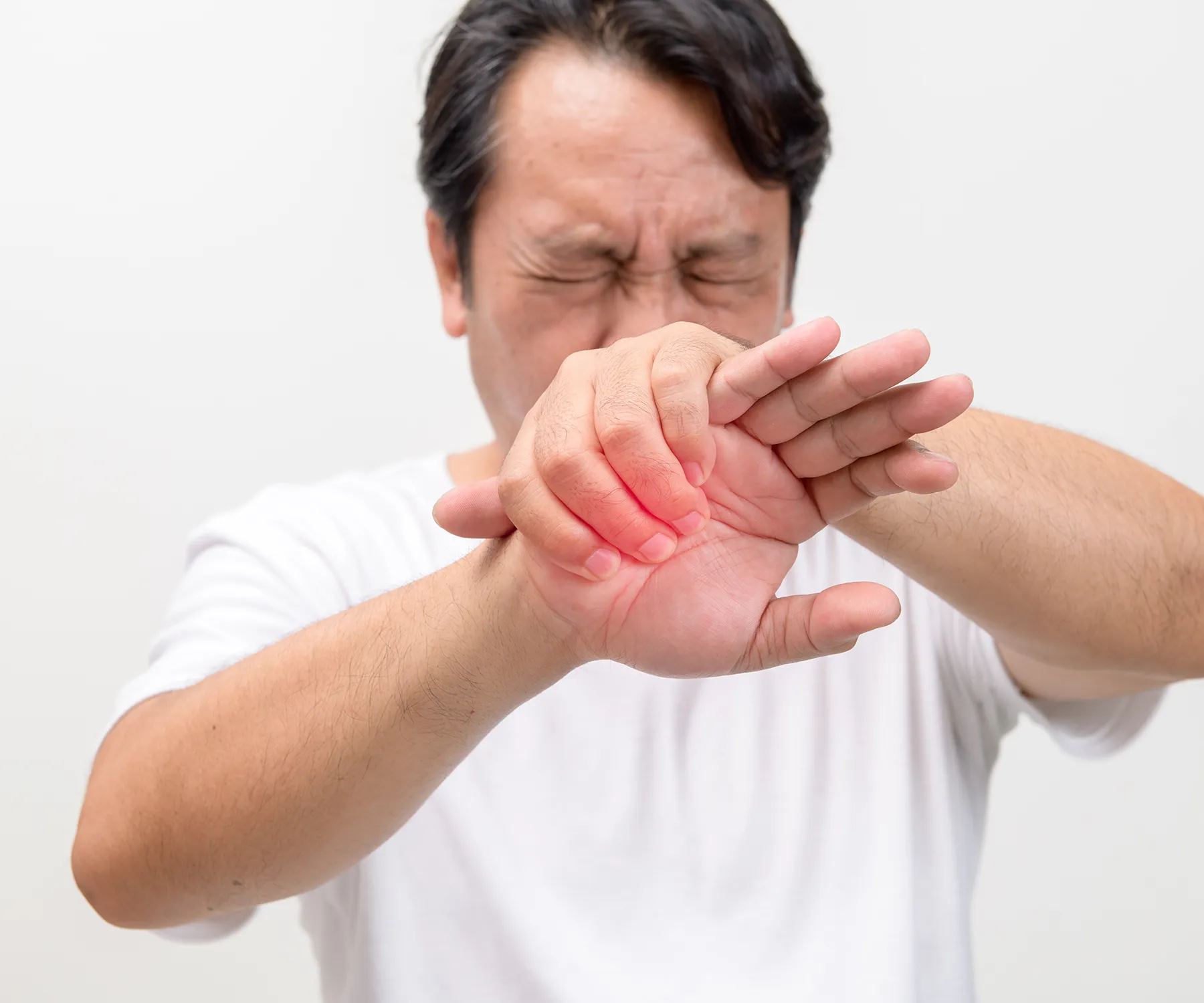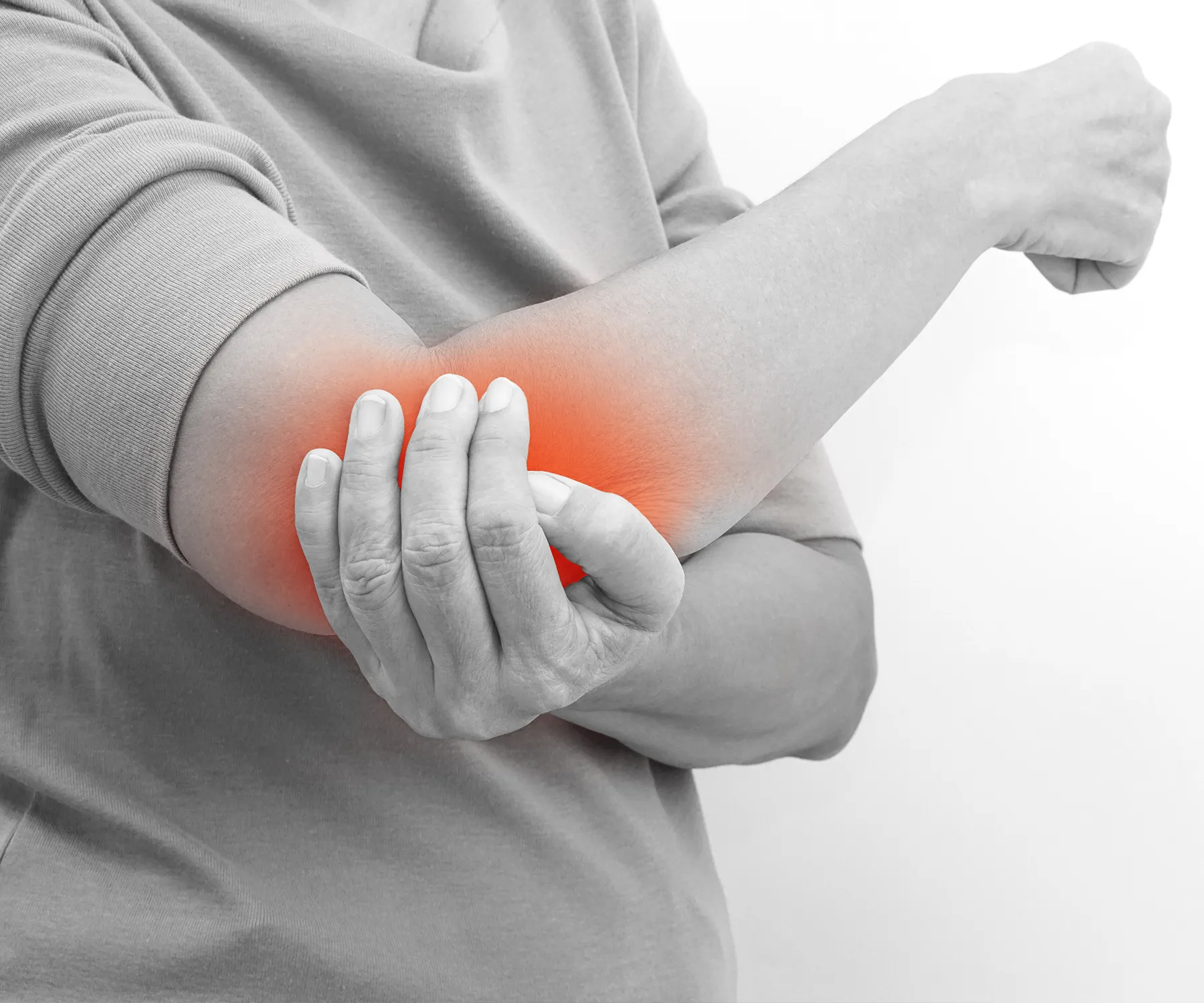Has this been happening to you lately?
Neck/Back Pain
Persistent or recurrent pain – localized or may radiate to other areas
Radiating Pain
Eg: If the slip disc is in the lower back, the pain may travel down the leg, known as sciatica
Numbness/Tingling
Compression of nerves may occur in the back, neck, arms, legs, or other affected areas
Muscle Weakness
Herniated disc can compromise nerve signaling to the muscles, thereby weakening them
Loss of Reflexes
Reflexes controlled by affected nerves may diminish, exaggerate, or alter
Limited Mobility
Pain and discomfort can restrict the range of motion in the spine
Mobility-led Pain
Movements like bending, twisting, lifting can put pressure on the affected areas
Impaired fine motor skills
Precision and coordination (for tasks like writing or buttoning clothes) can be compromised
What could have led to slip disc?
Over time, spinal discs wear down, causing slip discs or herniated discs. Repetitive activities, hard lifting, and rapid twisting can cause disc degeneration and herniation. Age, heredity, and sedentary lifestyle raise risk. Poor posture, obesity, and back problems can also cause slip discs. Understanding these causes can help prevent spine problems.
Physiotherapy for slip disc helps recover by
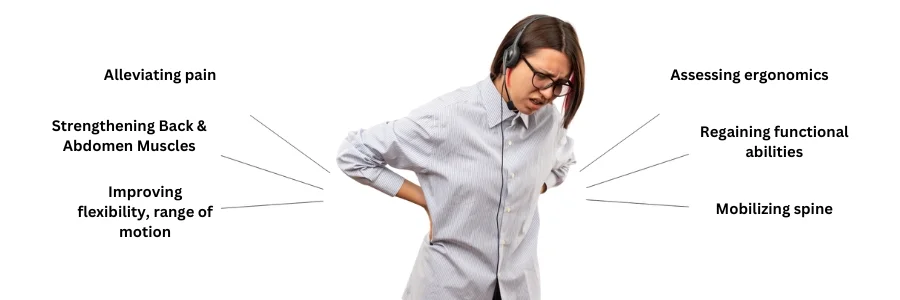
FAQs related to Slip Disc
What is a Slip Disc?
Slip Disc, Herniated Disc or Disc Prolapses happens when the soft cushion-like tissue between the vertebrae slips out of position. It can compress surrounding nerves, producing pain, numbness, or weakness. This issue can make movement uncomfortable and may require medical care.
When does Slip Disc pain aggravate?
Bending, lifting, and twisting might worsen slip disc pain. Sitting or standing for long periods, coughing, sneezing, and straining can worsen it.
Is physiotherapy for slip disc a good option?
Yes, physiotherapy for slip disc is an effective treatment option. It reduces discomfort, improves mobility, and strengthens surrounding muscles to support the spine. Physiotherapy may include manual therapy, exercises, and posture and education of body mechanics/ ergonomics.
Is slip disc serious?
Slip discs can be painful and severe. It can compress nerves, causing numbness, tingling, and weakening. Effective management requires thorough medical evaluation and treatment.
Do pain killers help treat slip disc?
Painkillers can temporarily relieve slip disc pain. They don’t treat the cause. Consult a doctor for a complete slip disc treatment plan that may involve physiotherapy for slip disc, lifestyle changes, and other interventions.
Is surgery required for slip disc?
Slip disc surgery is usually a final choice after non-invasive treatment fail. Physiotherapy, pain management, and lifestyle changes help treat most slip discs. However, a medical practitioner should assess symptoms, nerve compression, and unique circumstances to determine if surgery is needed.
Can I massage by back to reduce Slip Disc pain?
Massage may relieve back pain and relax muscles, but it may not fix the underlying cause of slip disc. Massage the back carefully. Avoid spine injury by applying light pressure.
How can I prevent Slip Disc?
To avoid a herniated disc:
1. Sit, stand, and lift with proper posture
2. Exercise regularly to strengthen the spine-supporting core muscles.
3. Avoid twisting and use your legs to lift big objects.
How much rest is required for Slip Disc?
The amount of rest needed for a slip disc varies on pain and medical advice. Rest may help reduce acute inflammation. However, long-term bedrest can weaken and stiffen muscles. To stay flexible and avoid difficulties, walk and stretch gently. Gradually increasing activity levels under proficient guidance can aid recovery and mobility. Consult a therapist for personalized recommendations on rest and activities for your slip disc issue.
What are the red flags of Slip Disc?
Some red flags of slip disc include severe and sudden onset of neurological symptoms such as profound weakness, loss of sensation, loss of bowel or bladder control, or difficulty walking. These symptoms suggest possible nerve compression or spinal cord involvement, and urgent medical evaluation is necessary.
Can disc slip or get herniated multiple times?
Discs can slip or herniate several times. Recurrent disc herniation is more likely in people with underlying disc degeneration, poor posture, repetitive stress, or spine-stressing activities. Good posture, frequent exercise, and avoiding spine strain can help prevent recurring occurrences.
How to live with a slipped disc?
Living with a slipped disc involves a few key steps:
1. Consult a doctor to assess the condition and create a treatment strategy.
2. Follow treatments: Follow physiotherapy, pain management, and lifestyle changes.
3. Practice good posture: Proper posture and ergonomics reduce spine strain.
4. Exercise regularly: Perform professional-recommended core-strengthening, flexibility, and spinal health exercises.
Remember, everyone’s experience is different, so engage with healthcare specialists to control symptoms and maintain a healthy lifestyle while living with a slipped disc.
How much rest is required for Slip Disc?
The amount of rest needed for a slip disc varies on pain and medical advice. Rest may help reduce acute inflammation. However, long-term bedrest can weaken and stiffen muscles. To stay flexible and avoid difficulties, walk and stretch gently. Gradually increasing activity levels under proficient guidance can aid recovery and mobility. Consult a therapist for personalized recommendations on rest and activities for your slip disc issue.
What should you avoid with a slipped disc?
Avoid activities that may worsen your symptoms or strain your spine if you have a slipped disc. Consider these:
1. Heavy lifting might strain the back and aggravate the problem.
2. Prolonged sitting or standing might put pressure on the discs.
3. Running, jumping, and other high-impact activities should be avoided.
4. Slouching or hunching might stress the discs. Practice good posture and get ergonomic aids.
How much time does it take to recover from a slipped disc?
Slipped disc healing depends on severity and individual factors. Physiotherapy, pain management, and lifestyle changes often improve symptoms within weeks to months. Symptom relief may take months to a year.

